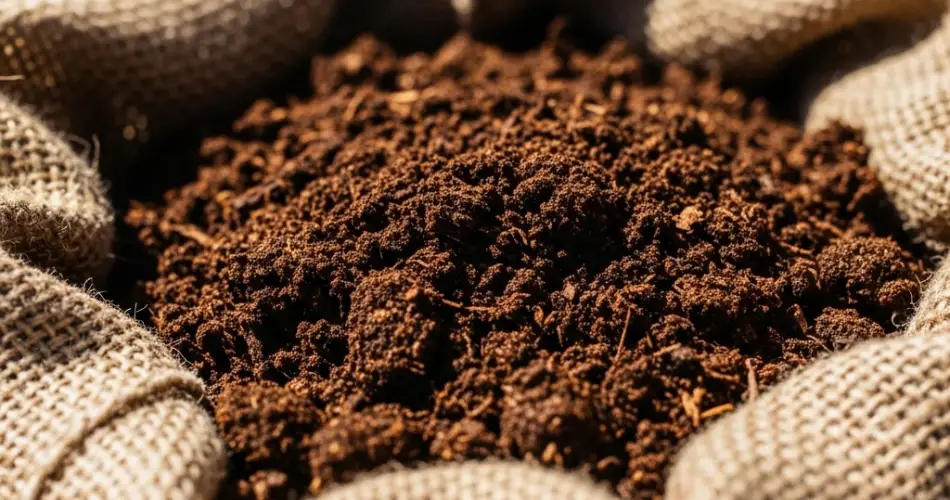For gardeners seeking to grow lush, healthy plants without synthetic chemicals, natural fertilizers offer an effective and eco-friendly solution. Unlike synthetic options, natural fertilizers nourish the soil while providing essential nutrients that promote plant growth, improve soil structure, and support beneficial microbial life. Whether you’re growing vegetables, herbs, flowers, or fruit trees, using the right natural fertilizers can make a noticeable difference in your garden’s performance.
Here’s a guide to some of the best natural fertilizers and how to use them to boost plant health and productivity.
1. Compost
Nutrient profile: Balanced blend of nitrogen, phosphorus, potassium, and micronutrients.
Compost is one of the most versatile and widely used natural fertilizers. Made from decomposed organic matter such as kitchen scraps, grass clippings, leaves, and manure, compost improves soil texture, enhances moisture retention, and provides a slow, steady release of nutrients.
How to use:
-
Mix into garden beds before planting.
-
Apply as a top dressing around established plants.
-
Add to potting mixes for container gardening.
Benefits:
-
Encourages microbial activity.
-
Reduces the need for chemical fertilizers.
-
Recycles organic waste into valuable plant food.
2. Worm Castings (Vermicompost)
Nutrient profile: Rich in nitrogen, phosphorus, potassium, and beneficial microorganisms.
Worm castings are the nutrient-rich waste produced by earthworms. This gentle yet powerful fertilizer improves soil aeration, boosts microbial activity, and enhances plant resistance to pests and diseases.
How to use:
-
Mix into soil before planting.
-
Use as a side dressing during the growing season.
-
Brew into compost tea for liquid feeding.
Benefits:
-
Won’t burn plants.
-
Improves root development.
-
Excellent for seedlings and sensitive plants.
3. Fish Emulsion
Nutrient profile: High in nitrogen, plus trace minerals.
Fish emulsion is a fast-acting liquid fertilizer made from fish waste. It provides a quick nutrient boost, especially during early plant growth when nitrogen is needed for leaf and stem development.
How to use:
-
Dilute with water and apply as a foliar spray or soil drench every 2–3 weeks.
-
Ideal for leafy greens and young seedlings.
Benefits:
-
Rapid absorption.
-
Encourages strong, green growth.
-
Also enriches the soil with amino acids and enzymes.
4. Bone Meal
Nutrient profile: High in phosphorus and calcium.
Bone meal is a fine powder made from steamed animal bones. It supports strong root growth, improves flower and fruit development, and prevents calcium deficiencies like blossom end rot in tomatoes and peppers.
How to use:
-
Work into the soil at planting time, especially for root crops, bulbs, and flowering plants.
-
Use as a side dressing during the blooming season.
Benefits:
-
Long-lasting and slow-release.
-
Great for flowering annuals, perennials, and fruiting vegetables.
5. Blood Meal
Nutrient profile: Very high in nitrogen.
Blood meal, made from dried animal blood, provides a powerful nitrogen boost. It’s especially helpful for correcting yellowing leaves or promoting vigorous leafy growth in vegetables like spinach, lettuce, and cabbage.
How to use:
-
Apply sparingly and mix well into the soil.
-
Use when plants show signs of nitrogen deficiency.
Benefits:
-
Promotes lush, green foliage.
-
Acts quickly to correct nitrogen shortages.
Caution: Overuse can burn plants and attract animals, so apply in moderation.
6. Banana Peels
Nutrient profile: Rich in potassium and phosphorus.
Banana peels are an excellent DIY fertilizer, especially useful for flowering and fruiting plants. They decompose quickly, releasing nutrients that support strong blooms and healthy fruit production.
How to use:
-
Chop and bury peels near plant roots.
-
Blend into water to create a liquid fertilizer.
Benefits:
-
Encourages blooming.
-
Natural and cost-effective.
7. Epsom Salt (Magnesium Sulfate)
Nutrient profile: Magnesium and sulfur.
Epsom salt is especially beneficial for tomatoes, peppers, and roses, which often need additional magnesium for healthy growth and fruit development.
How to use:
-
Dissolve 1 tablespoon in a gallon of water and apply as a foliar spray or soil soak.
-
Use monthly during the growing season.
Benefits:
-
Improves chlorophyll production.
-
Prevents yellowing between leaf veins.
8. Kelp Meal or Seaweed Extract
Nutrient profile: Low in NPK, but high in micronutrients and growth hormones.
Kelp and seaweed fertilizers stimulate plant growth, improve stress tolerance, and increase flowering and fruiting. They also enhance root development and encourage beneficial soil microbes.
How to use:
-
Sprinkle kelp meal into soil or compost.
-
Apply seaweed extract as a foliar spray or root drench.
Benefits:
-
Improves plant resilience.
-
Boosts yields without overfeeding.
Final Thoughts
Using natural fertilizers is a smart and sustainable way to feed your garden. These organic materials not only provide essential nutrients but also support soil health, biodiversity, and long-term plant vitality. By choosing the right combination of natural fertilizers based on your plants’ needs and growth stage, you’ll foster a healthier, more productive garden—without relying on synthetic chemicals. Whether you compost at home or purchase organic amendments, your plants will thrive with the power of nature.



